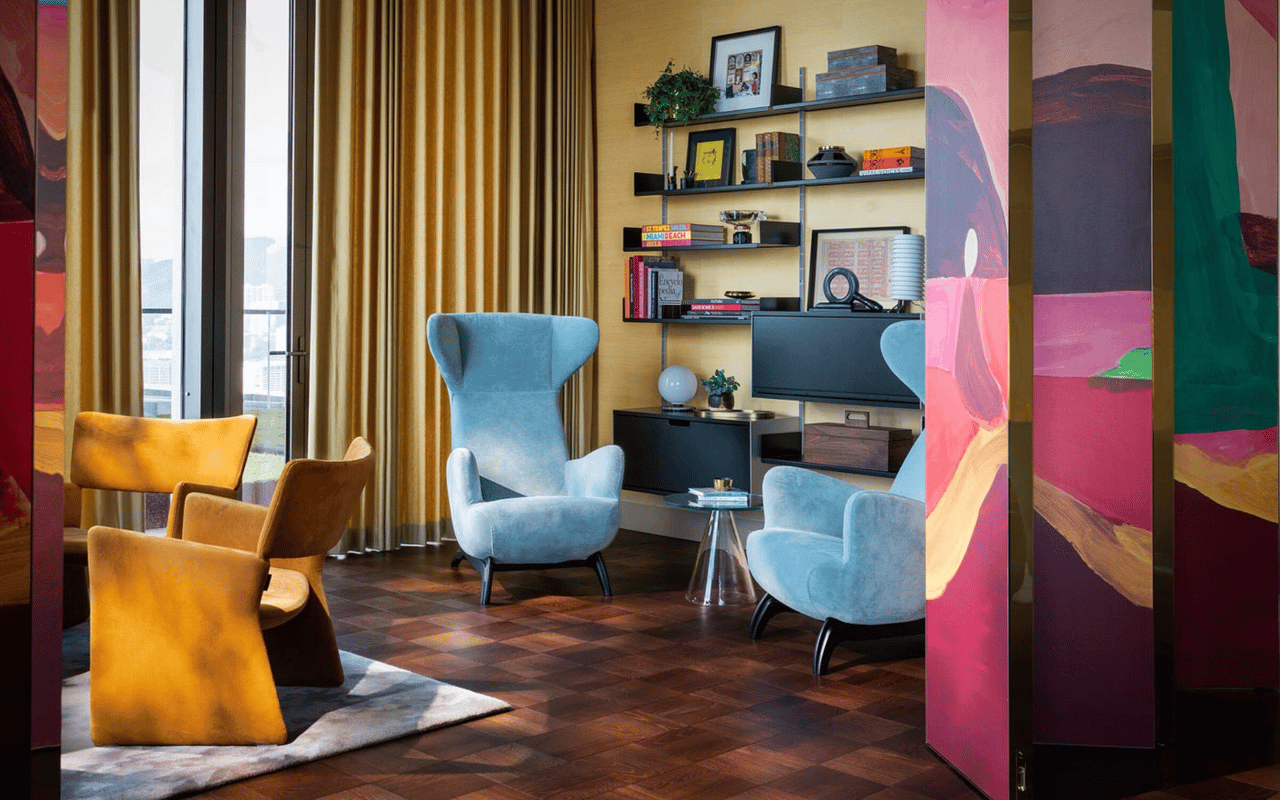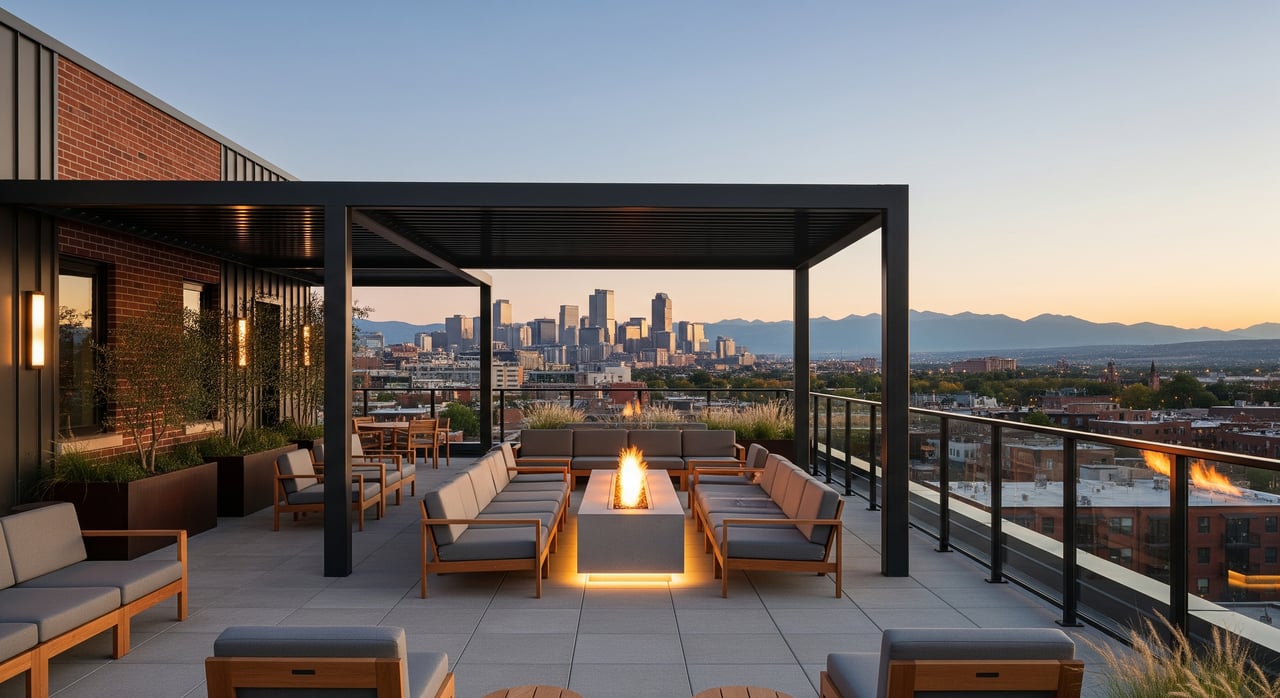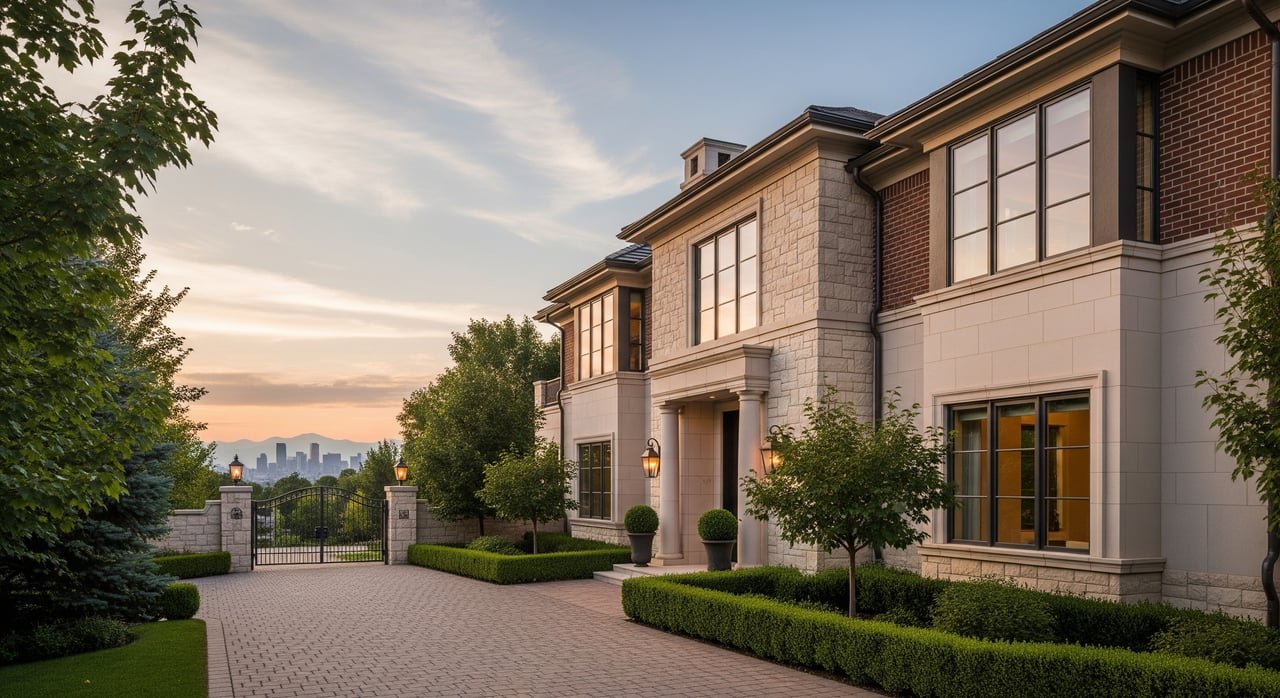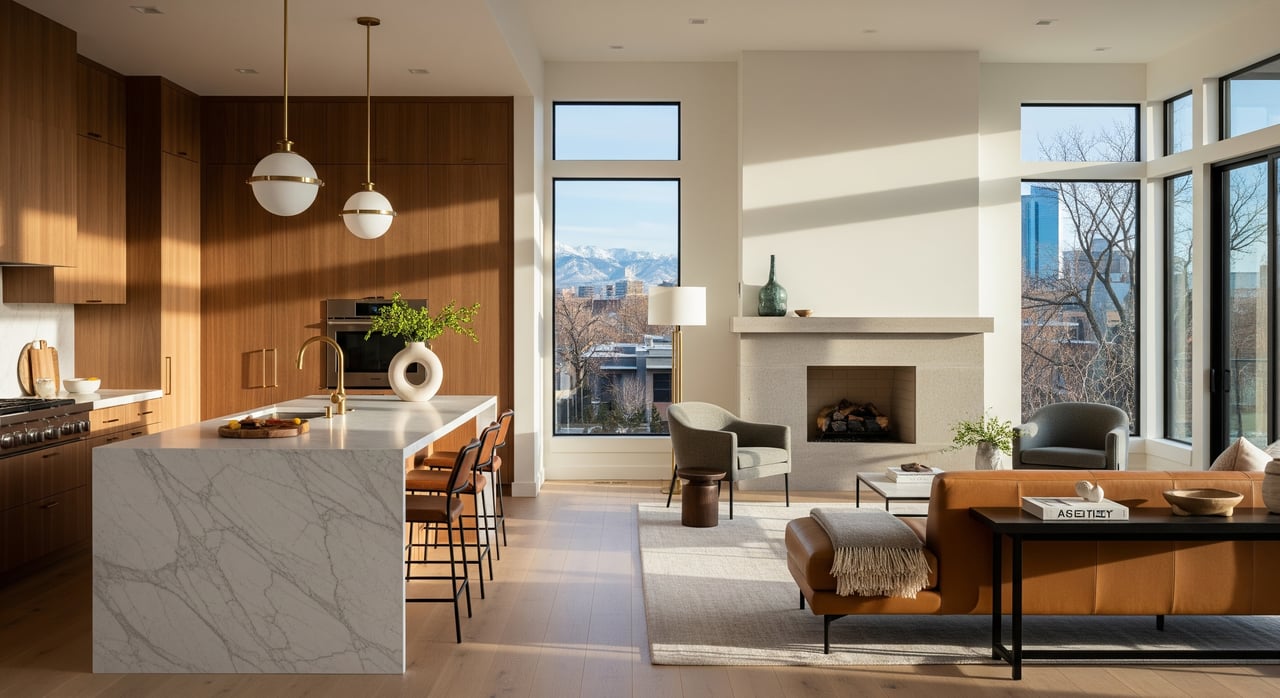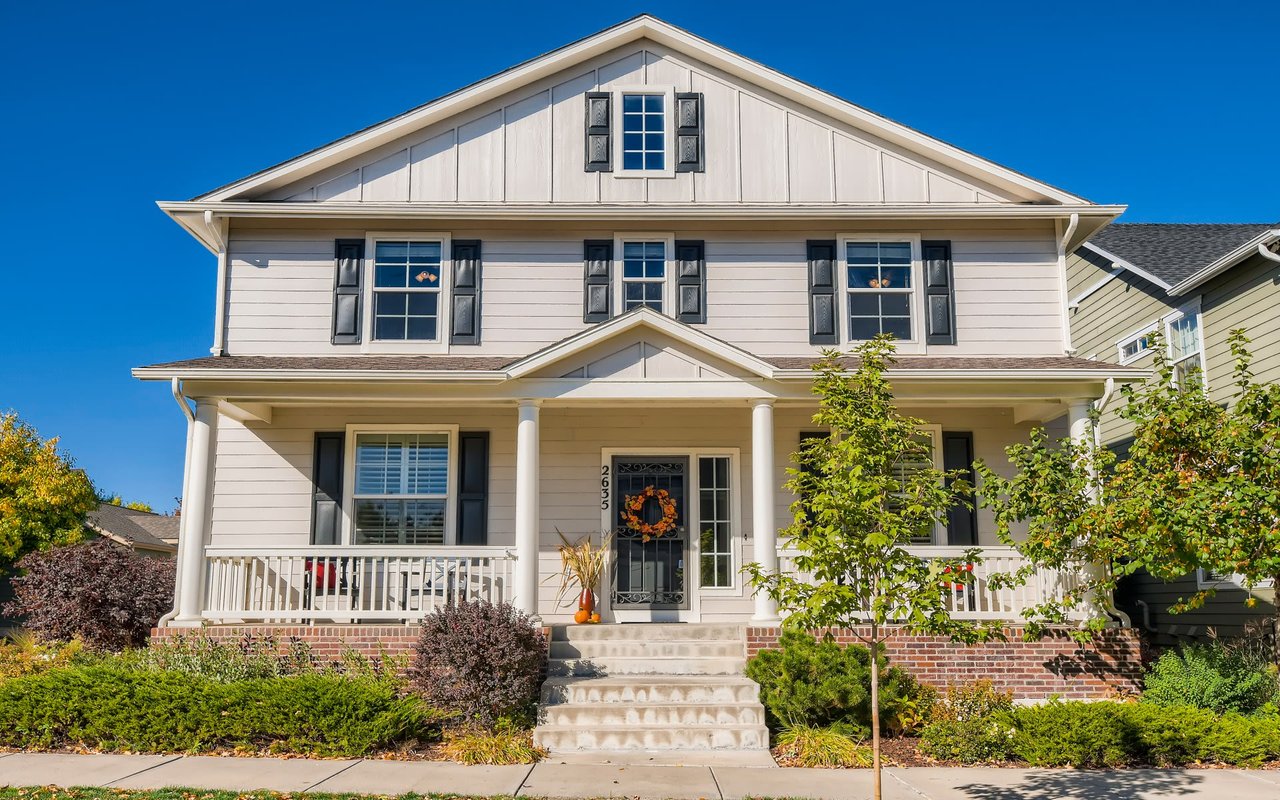Luxury materials have the power to transform a simple space into a sophisticated and opulent environment. When incorporated thoughtfully, these materials elevate a home's aesthetic, creating interiors that exude elegance and timeless luxury. In Denver, you can add luxury elements to almost any home — the city’s residential real estate market features many styles of architecture, each with its own charm.
This guide explores how to effectively use luxury materials in interior design, focusing on selecting suitable materials and integrating them into various aspects of your home decor.
The Essence of Luxury Materials
However, when it comes to luxury interior design, there are as many questions as there are luxury materials to consider. What’s the difference between honed and polished marble? How can you integrate wide or narrow hardwood flooring planks? Which natural stones are on-trend in 2024? What’s the best way to use gold in modern interiors? Do you have a room that calls for creative mixing and matching textiles?
Read on for informed takes on the fundamentals of luxury materials and where trends might take you in 2024.
Selecting the Right Materials
Marble (honed or polished)
Honed marble has a matte, satin-like finish with little to no shine. This finish gives the marble a soft, understated appearance, ideal for a more relaxed or rustic look. Honed marble is less likely to show scratches and etching, making it a practical choice for high-traffic areas like kitchens.
Polished marble, on the other hand, has a glossy, reflective surface that highlights the stone's natural veining and color. This finish gives the marble a sleek, elegant appearance, adding a touch of sophistication and luxury to any space. Polished marble is more prone to scratches and etching but is easier to clean due to its smooth surface.
Note that marble countertops in kitchens or bathrooms show light stains or wear — these etchings can add character for those who want a lived-in look. To maintain its luxurious look, it’s essential to choose high-quality marble and ensure it is properly sealed and maintained.
Hardwood
When choosing hardwood materials, some people opt for engineered wood as an alternative to solid hardwood. Engineered wood consists of a thin layer of natural hardwood on top of a core of high-quality plywood or fiberboard. This construction makes it more resistant to moisture and temperature fluctuations, making it suitable for areas like basements or kitchens where traditional hardwood might not be ideal.
The width of hardwood floor planks can significantly influence the style and feel of a room. Wide planks, typically 5 inches or more in width, are a popular trend in luxury interior design as they create a more expansive and seamless look. They allow the natural grain and character of the wood to be showcased, adding a sense of grandeur and sophistication to larger spaces. Narrow planks, on the other hand, create a more traditional or classic look with a pattern that can add texture and visual interest to a room. Narrow planks are often chosen for smaller spaces or to achieve a more intricate and detailed aesthetic.
Natural Stone
In 2024, alternatives to marble, such as quartz and soapstone, have gained popularity for their unique aesthetic qualities and practical benefits. Quartz, an engineered stone, offers the elegance of natural stone with added durability and low maintenance. On the other hand, Soapstone is a natural stone known for its smooth, matte finish and subtle, soft veining.
Remember to choose from different finishes when integrating natural stone into your interior design. For example, polished finishes bring out the stone’s natural colors and veining (particularly in large slabs that create a striking focal point in kitchens, bathrooms, and living spaces). Honed finishes, with their non-reflective surfaces, add a more subtle, understated look that blends well with contemporary and minimalist designs. Leathered finishes, increasingly popular in 2024, provide a textured surface with a slightly rough feel.
Metals
Mixing metal finishes has become increasingly popular in 2024, allowing for a more layered and nuanced design. Combining warm metals like brass and copper with cooler tones like brushed nickel or stainless steel creates a balanced, visually interesting space that feels cohesive and dynamic.
Gold tones, in particular, continue to be in vogue in 2024, reflecting a shift towards warmer, more inviting interiors. The key to using gold in modern interiors is balance; pairing it with neutral or muted tones prevents it from overwhelming the space and ensures that it complements rather than competes with other design elements.
Textiles
Integrating Luxury Materials into Your Decor
-
Statement Pieces: One of the most effective ways to incorporate luxury materials is through statement pieces. A marble island in the kitchen, a grand hardwood dining table, or a custom silk drapery can serve as focal points that draw attention and admiration.
-
Layering Textures: Layer various textures throughout the space to achieve a rich and inviting atmosphere. Combine rough with smooth, matte with shiny, and hard with soft. This layering not only enhances the complexity of the interior but also creates a dynamic and inviting environment.
-
Lighting and Luxury: Lighting plays a crucial role in showcasing luxury materials. Proper lighting can highlight the natural beauty of marble veining, the warmth of wood grains, or the luster of metallic finishes, dramatically enhancing the overall impact of these materials.
-
Color Coordination: When using luxury materials, it’s essential to consider the space's color palette. Neutral tones often work best, providing a subtle backdrop that allows the materials to shine. Accents in bold colors can be used sparingly to add depth and interest without overwhelming the luxurious elements.
Challenges and Considerations
Moreover, it's essential to balance the use of luxury materials to avoid a space that feels overly opulent or disconnected from practical living. The key is to integrate these materials to enhance functionality while elevating the aesthetic.
Incorporating luxury materials into interior design requires thoughtful selection and strategic integration. By choosing the right materials and using them judiciously within the design, you can create an elegant, timeless interior that looks spectacular and offers comfort and functionality. Luxury materials are not just about aesthetics but about creating a space that feels uniquely yours, reflecting your taste and lifestyle in every detail.
About Kimber Ward
Contact Kimber Ward today to embark on your journey toward realizing your real estate goals and unlocking your property's full potential.
